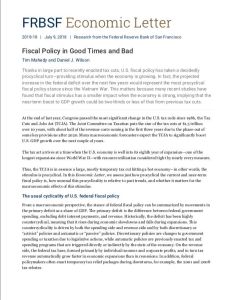Join getAbstract to access the summary!

Join getAbstract to access the summary!
Tim Mahedy and Daniel J. Wilson
Fiscal Policy in Good Times and Bad
FRBSF, 2018
What's inside?
In 2017, the United States enacted tax cuts to boost GDP, but the results may not meet expectations.
Recommendation
Typically, governments apply stimulus when an economy is in decline and then reverse course when conditions strengthen. But the 2017 US Tax Cuts and Jobs Act, implemented well into the eighth year of America’s expansion, seeks to boost and extend robust output. According to economists Tim Mahedy and Daniel J. Wilson in this brief but cogent analysis, evidence suggests such incentives are less effective during economic upswings than they are during downturns. getAbstract recommends this insightful research to economists and analysts.
Summary
About the Authors
Tim Mahedy is an economist at Bloomberg LP, and Daniel J. Wilson is an economist at the Federal Reserve Bank of San Francisco.


















Comment on this summary